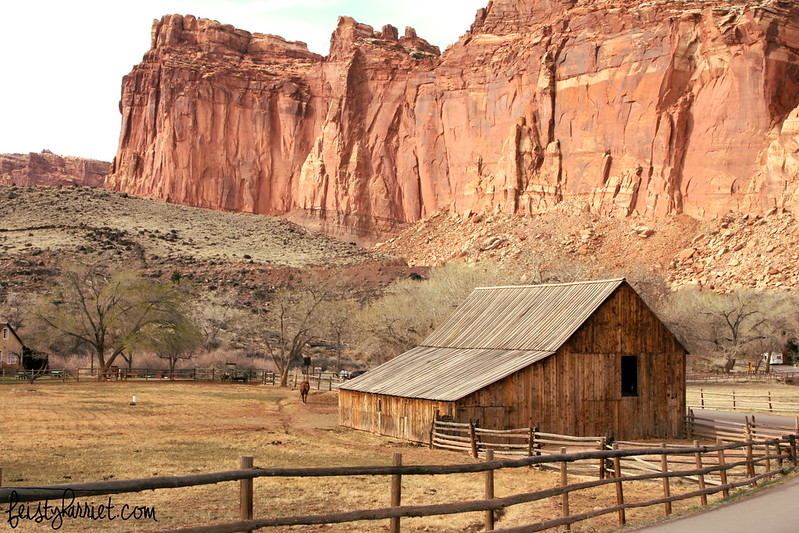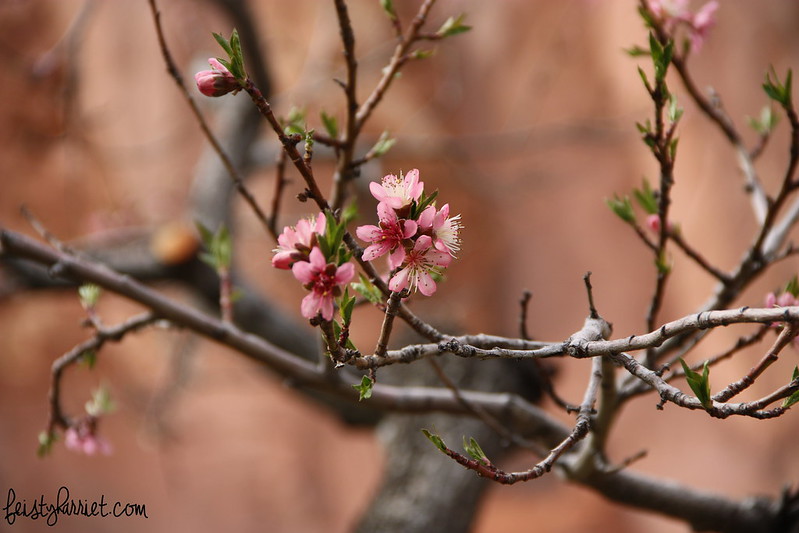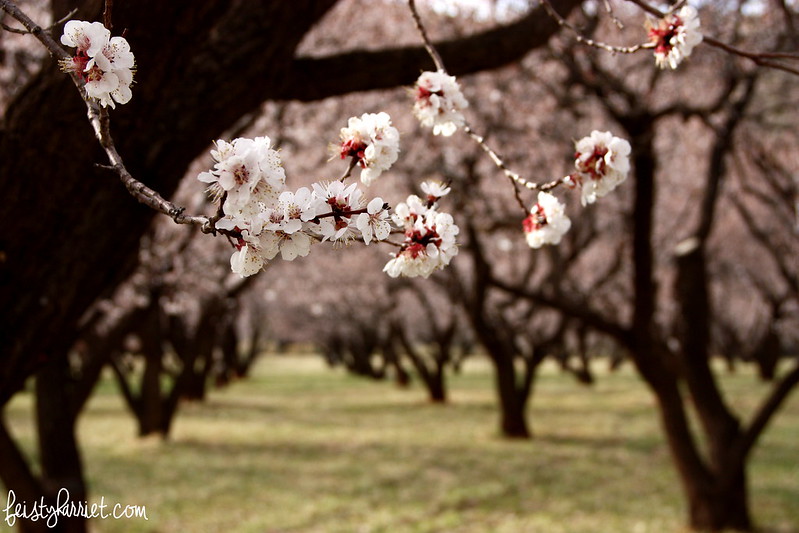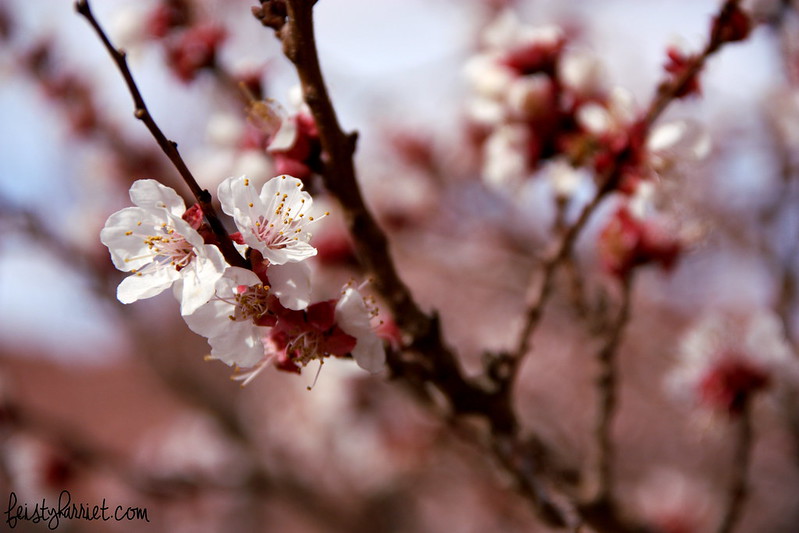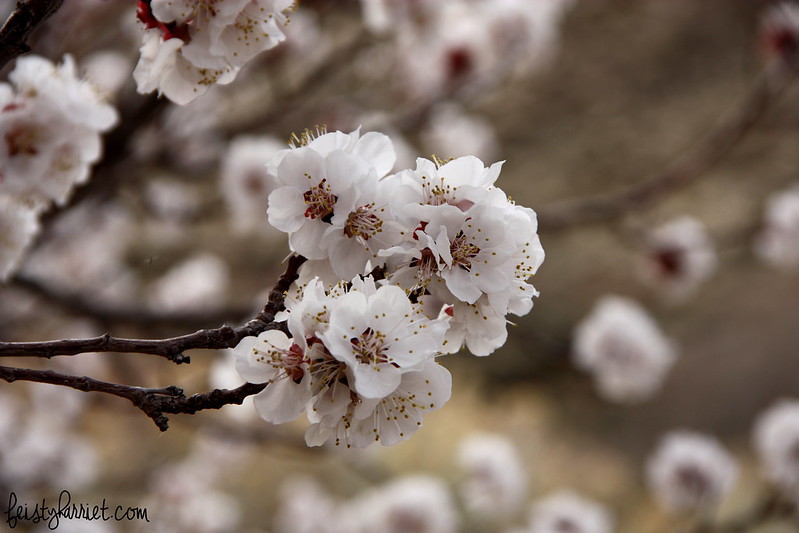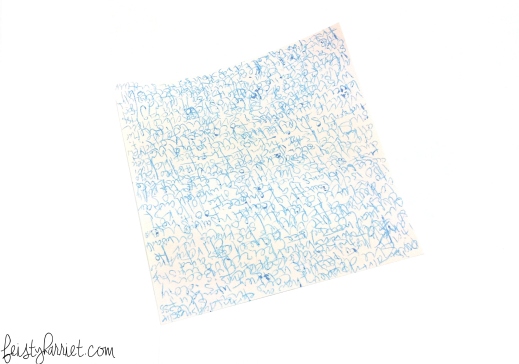I know many of you are still buried in winter, and I don’t mean to rub it in, but except for a day here and there we’ve been experiencing spring-like conditions since January. This is kind of good (yay! Spring!) and also really really scary (WHAT HAPPENED TO THE SNOW?!?!). I imagine our wildfire season will be worse than your snow season, so don’t throw stones at me quite yet.
That being said, last weekend while I was taking the very long way home from a weekend with my sweetheart, I kind of accidentally stumbled upon one of the most beautiful places I didn’t know existed; the fruit orchards of Capitol Reef National Park. Okay, I guess technically I did know they were there, but I did not realize how stunningly beautiful they would turn out to be. Mormon pioneers settled in Capitol Reef about 150 years ago, and they planted hundreds of fruit trees which in addition to a few houses and a school are all that remain.
The park rangers cultivate the trees and sell the fruit by the bushel or in overpriced fruit pies, and that is all fine and good, but in researching this park what I most wanted was to happen to be there when the orchards were in bloom. The image of rows of trees smothered in creamy pink blossoms sitting like a candied cloud at the base of towering red rock cliffs has been haunting my dreams for months.
When I found myself kind of in the area (meaning, if I drove 130 miles out of my way I would be “in the area”) I was immediately stunned by the gorgeous cliffs striped with red and orange, black and purple, creamy white and green. There are a few small stands of trees along the road through the park, I stopped at took pictures at all of them but was a little disappointed that most were just starting to bud and not yet in full bloom. I stopped at the Visitor Center to inquire if there were additional orchards, where they were, and if any of them were current in blossom.
The ranger gave me directions to the upper campground, located on Loop C, and told me a grove of 200 apricot trees were in full bloom a day or two before and he hadn’t been back since. I thanked him and headed that way, desperately hoping that there would still be a few petals on the trees.
I rounded a curve and was gobsmacked by rows and rows of trees just losing their white blossoms; I parked my car and as soon as I opened the door I could smell the sweet perfume from these trees and hear the bees. Kids were scampering through the orchard, a couple of people were having a picnic, some guy was taking a nap leaning against a trunk; it was magical.
I wish I had driven through the day before, many of the trees were gray-ish pink and has lost most of their white flowers, but I still walked through that orchard for almost two hours just reveling in the spring, the blossoms, the intoxicating aroma, and the red sandstone cliffs soaring overhead.
I need to go back to Capitol Reef, not only to explore a little more and do some hiking, but hopefully to spend a few nights in the campground adjacent to the apricot orchard. Honestly, this is the kind of place made of the stuff of dreams.

